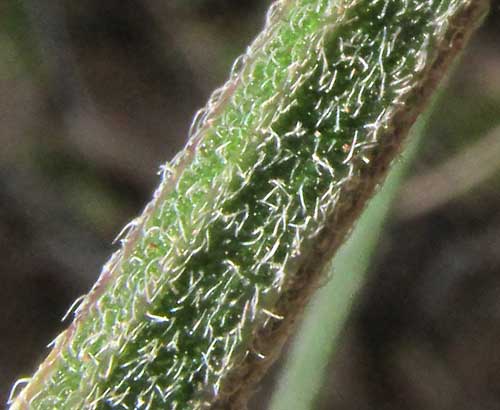Excerpts from Jim Conrad's
Naturalist Newsletter
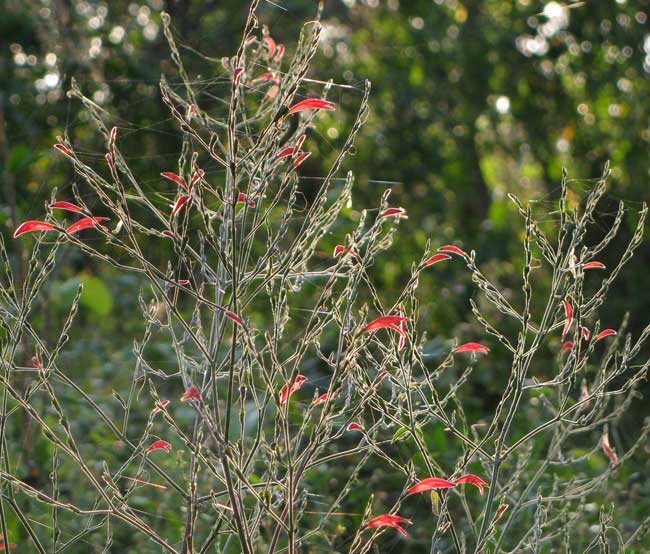
from the January 16, 2011 Newsletter issued from Hacienda Chichen Resort beside Chichén Itzá Ruins, central Yucatán, MÉXICO; limestone bedrock, elevation ~39m (~128ft), ~N20.676°, ~W88.569°
SIXANGLE FOLDWING FLOWERING
Some wildflowers, like certain lilies and orchids, look as if they're sculpted of wax along classic, elegant lines. Others, like dandelions with their simple explosions of yellow in fields of green grass, are like haiku spoken in a murmuring crowd. A six-ft-tall (1.8m) wildflower blossoming nowadays is like fireworks -- many bright-red flairs diffusely detonating in open spaces along trails through the woods and at woods edges. You can see the effect above.
A closer look at an inch-long blossom is below:

The curved, two-lipped corolla is reminiscent of certain mint flowers, like Scarlet Sage, but the plant isn't square-stemmed and the fruits aren't composed of four nutlets. If you peek into the flower you'll find only two stamens. You can barely see the stamens' yellowish, oblong, pollen-bearing anthers peeping beneath the tip of the top lip. Extending a little beyond the top lip's tip and anthers is the whitish, stigma-tipped style.
This is a member of the Acanthus Family, the Acanthaceae. Since it occurs in southern Texas and Florida it has English names. Sometimes it's called False-mint but most books refer to it as Sixangle Foldwing. It's DICLIPTERA SEXANGULARIS, and from Florida and Texas it's fairly commonly distributed southward through the tropics into South America.
A field mark for the Acanthus Family is that leafy bracts or scales typically subtend each blossom. In the flower picture, at the branch tip, you can best make out a scale arising beneath the topmost unopened flower bud and rising up the bud's far side. Also in this family, flower styles -- the ovaries' slender "necks" -- are long and persist atop maturing ovaries. In the last picture, old, discarded corollas, looking like dirty paper, dangle from such styles.
Issued on February 17, 2020 from the forest just west of Tepakán; elev. ~9m (~30 ft), N21.053°, W89.052°; north-central Yucatán state, MÉXICO
MORE PICTURES
I've learned that down here the Acanthus Family is a big one, the genera and species often identifiable only by noting many details. Therefore, below we can see more details of this species. First, another look at the flowers:
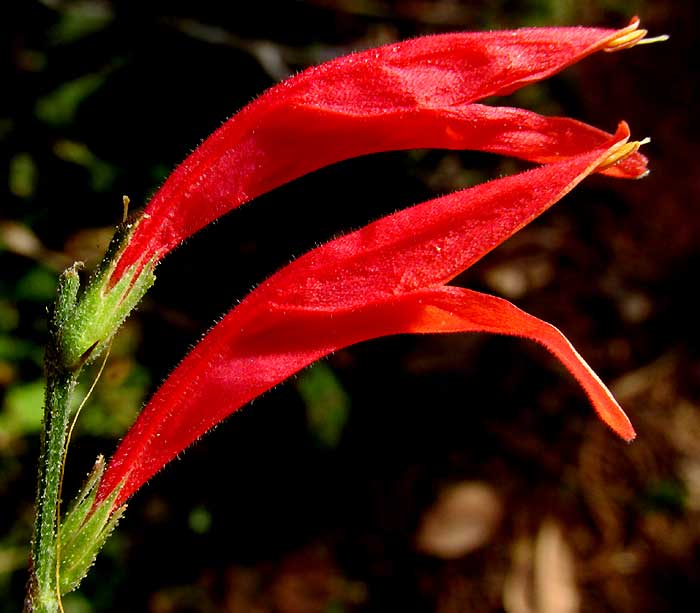
Now the leaf shape and venation:
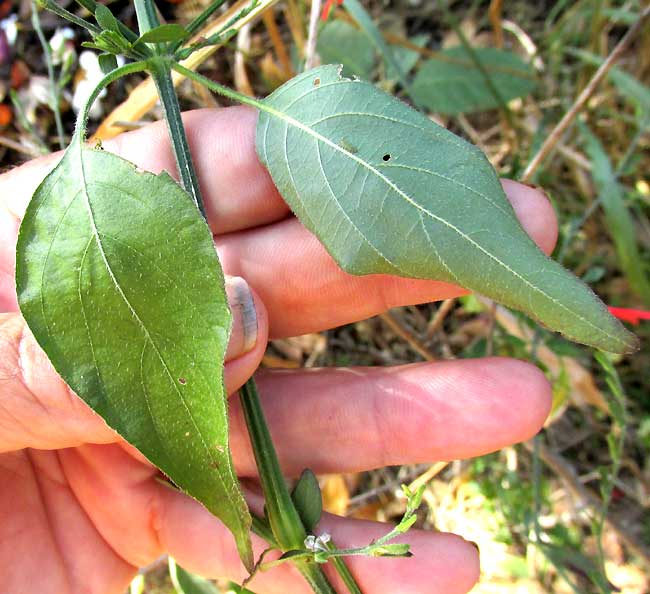
The leaves are fairly stiff-hairy:
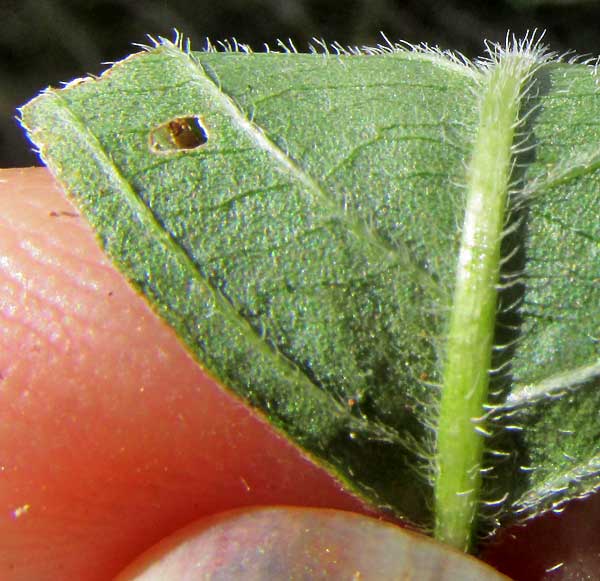
And the stems really do have six angles, as well as being well equipped with sharp-pointed, broad-based, surface-hugging hairs:
